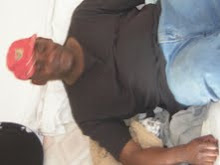By Omoseye Bolaji
Is it not a wonderful
thing when we devour (read) a gripping, superb book written in our African
languages, the mother tongue in particular? Such books read at a very young age
often transport us into another world entirely, especially if the pertinent
author is a fluent wordsmith.
Hence
millions of Yoruba speaking people around the world (including myself) realise
only too well the debt we owe to D.O Fagunwa, a more than proficient and
dexterous writer in the Yoruba language. What an imagination! What florid
captivating descriptions! Reading Fagunwa’s books enriched our childhood
prodigiously, especially as we were so lucky to read him as kids.
It is rather
zany that as regards writing in the mother tongue, our African languages, there
is often complete ignorance among readers from other linguistic groupings about
superb writers strutting their stuff in other African languages. That is the
burden such great writers often necessarily carry. For example we Yorubas know
all about the one and only D.O Fagunwa, but how many Yorubas know about Thomas
Mofolo or KPD Maphalla? Or vice versa?
Okay, Thomas Mofolo (pix, above) and Maphalla are regarded as all-time greats of Sesotho (a South African
‘African language’) literature. Since there have been many translations (into
European languages) of Mofolo’s books - especially Chaka – we can assume that from the international point of view Thomas
Mofolo would be more celebrated than Maphalla.
Yet KPD
Maphalla arguably is the greatest writer ever in the Sesotho language. Here is
a living legend indeed! (He is still very much alive unlike Fagunwa and Mofolo
who died many decades ago) Maphalla has published well over 35 books in Sesotho,
a man whose books have been read by successive generations of (Sesotho
language) readers in schools and Colleges in the pertinent regions. Just like
D.O Fagunwa in the Yoruba niche.
Years ago,
Fagunwa’s books were recommended reading in proliferating schools in Yorubaland,
as it were, (mainly western Nigeria) And we all relish those good old days!
Reading any work of Fagunwa then – like Ireke Onibudo, Ogboju Ode Ninu Igbo
Irunmale, Igbo Olodumare, Aditu Olodumare etc - was being transported into a
fantastical, exhilarating world where human beings, evanescent spirits, animals,
ancestral African legends are intertwined inextricably.
As scholar Bayo
Adebowale has put it: “Whoever among them can ever forget Fagunwa’s powerful
character portrait of his major characters like Esu Kekereode, Anjonnu Iberu,
Olowoaye, Ojola Ibinu, Kako, Akaraoogun, Imodoye, Olohun Iyo, Aramanda Okunrin,
Egbin, Ibembe Olokunrun, Ifepade, Arogidigba, Baba Onirugbon Yeuke, Ajediran,
Iragbeje, Ajantala, Ogongo Baba Eye, Edidare people and Omugodimeji their Royal
Father, Ireke Onibudo, itanforiti, Ologbo Ijakadi, Iyunade and Ahondiwura!”
Not that
Fagunwa is the only superb writer in the Yoruba language. There have been a
number of others over the decades like the revered Adebayo Faleti, Akinwunmi
Isola, and Afolabi Olabimtan (who I once interviewed for a Nigerian weekly in
the past). Prof Faleti’s Yoruba classics (books) include O leku and Efunsetan Aniiwura
– which we read long ago.
Yet there is
no doubt about it that D.O Fagunwa will always be considered the greatest
creative writer ever in the Yoruba language; the same way Thomas Mofolo and KPD
Maphalla are regarded as all-time greats (or ‘greatests’) in the Sesotho
language. Mofolo, being a pioneer (first novelist in the Sesotho language) will
always be given pride of place by scholars and pundits. Ditto D.O Fagunwa in
the Yoruba language.
It is a
crying shame that these days, most African youth seem to consider it a burden,
an imposition, even “infra dig” to read books written in their mother tongues
across the continent. They do not know that this is sheer folly on their part.
The ideal thing is to master both our mother tongues plus “international
language” – bask in them all!
In this wise
we all remember that one of Africa’s greatest ever writers, Ngugi wa Thiong’o
(from Kenya) made his name as a brilliant writer in English, and then suddenly
announced that he would be focusing on his mother tongue (Kikuyu) in his
writings. Many scholars have regarded this as “extreme”, but the point is that
there is great joy in the literature of our copious African languages…suke…



